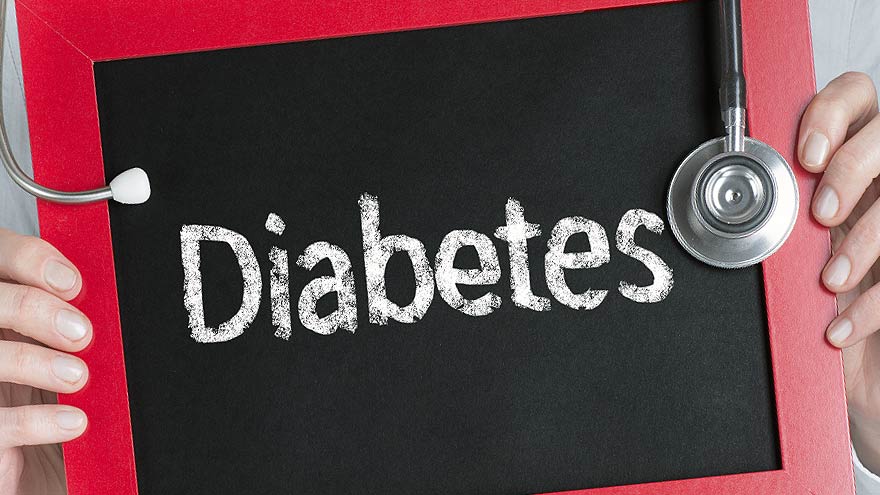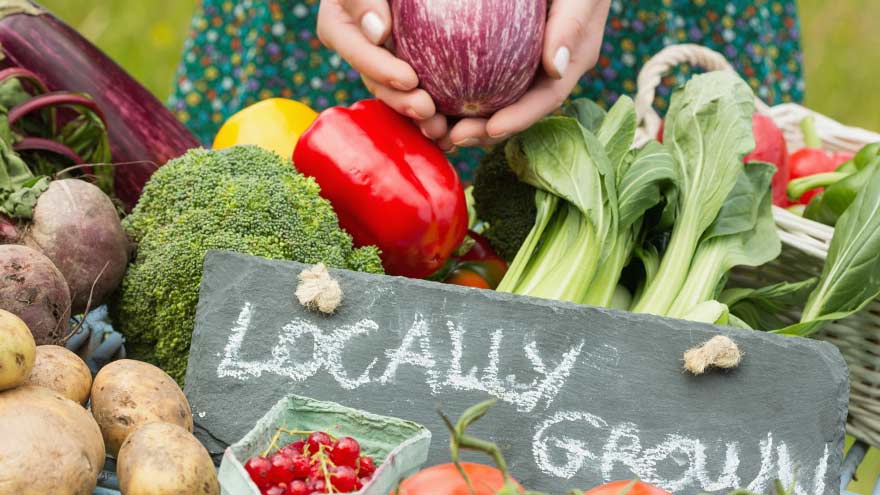Search
-
The Not-So-Fab-Five: Foods That Increase Stroke and Heart Disease Risk
Did you know that 80 percent of all strokes are preventable? Learn which foods should be eaten in moderation to reduce your family's risk of stroke. Stroke is the fifth leading cause of death in the nation and a major cause for disability, killing 130,000 people each year. But did you know that 80 percent of all strokes are preventable, according to the American Stroke Association? Several stroke risk factors -- high blood pressure, smoking, diabetes, physical activity level, obesity, high cholesterol and heart and artery disease -- can be controlled, treated and improved, right down to the foods we choose to consume each day. Diets high in sodium can increase blood pressure, putting you at greater risk for stroke. A high-calorie diet can lead to obesity -- another risk factor. And foods high in saturated fats, trans fat and cholesterol will raise your blood cholesterol levels causing blood clots, which -- you guessed it -- can lead to a stroke. The “not-so-fab” five foods listed below play a large role in damaging your body and causing vascular disease, stroke and heart disease and should be avoided on a regular basis. However: Moderation is the key to life, in my opinion. Sure, everyone is going to have a soda here and there or a steak off the grill, but keep it off the main menu. 1. Packaged and Fried Food Have you noticed foods like hot dog buns and bottled salad dressings rarely go bad? Ever asked yourself why? This is due to the use of hydrogenated oils, which are trans fats. Hydrogenated oils stay solid at room temperature and do not require refrigeration. Convenient? Yes. Healthy? No. Unfortunately, many frozen foods and meals also fall into this category, except for frozen fruits and veggies. So here’s the lowdown on trans fats: They’re considered by many experts as the worst type of fat you can consume, raising your LDL (“bad”) cholesterol and lowering your HDL (“good”) cholesterol. While some meat and dairy products contain small amounts of naturally occurring trans fat, most dietary sources are formed through an industrial process adding hydrogen to vegetable oil, causing the oil to solidify at room temperature. The FDA is in the process of restricting or possibly banning trans-fats from food in the U.S. A study published in JAMA Cardiology compared data from counties with and without trans-fat restrictions and the findings were substantial: There was a 6 percent decline in hospitalizations for heart attack and stroke in counties with trans-fat restrictions. Bottom line: Ideally no processed food should pass your lips, but realistically, aim for less than 2 grams of trans fat per day. Skip the store-bought treats at the office and fries at lunch. Also avoid crackers, regardless of what you are dipping them in. Choose to eat fruits to satisfy your sweet cravings and veggies and hummus to satisfy the savory. 2. Lunch meat Processed meats, including bacon, smoked meats and hot dogs, are all on the DNE (Do Not Eat) list, unless you want to play with fire. Processed meats are a no-go if you want to keep your arteries clear of plaque buildup. So what is the alternative to your salami sandwich? Try a healthy alternative like a tuna sandwich with avocado (a great alternative to mayo) or a veggie sandwich. 3. Diet soft drinks First of all, when a drink is sweeter than a candy bar but it contains zero sugar and zero calories, buyer beware. Many consumers think because a soda is labeled “diet” it’s a better choice, but studies have linked diet soft drink consumption with an increased risk of stroke and vascular disease. In a nine-year study of more than 2,500 people, those who drank diet soda daily were 48 percent more likely to have a heart attack or stroke or die from those events, compared with those who rarely or never drank soda. What else are you supposed to drink? If you must drink soda, break the everyday habit and drink it on special occasions; otherwise water rules. And if you don’t like water, try flavoring your water with fruit slices. 4. Good-old red meat So is there ANY good meat out there you ask? The answer is yes, but it’s not red. In the journal Stroke, an article showed women who consumed large servings of red meat regularly had a 42 percent higher incidence of stroke. Red meat is high in saturated fat, which clogs arteries with plaque. The alternative to red meat is a heart-healthy protein like poultry or fish, or even non-animal products like beans, nuts and tofu. 5. Canned foods Steer clear of factory processed soups, beans and sauces. Canned items all have incredible amounts of sodium or MSG or baking soda/powder to maintain their freshness and shelf life. One study showed if you consume more than 4,000 mg of salt per day, you more than double the risk of stroke compared to diets with less than 2,000 mg. Another tip: When possible, plan and make meals from scratch. Making the wrong meal or snack choices is one of the biggest contributing risk factors for stroke and heart disease. Most people know what good food choices are, but they don’t realize the serious impact the bad choices have on overall health. Learn what is most beneficial to your body to consume. It will be a life changer – literally.
Read More About The Not-So-Fab-Five: Foods That Increase Stroke and Heart Disease Risk
-
Get Reel: Top 5 Fishing Spots in the Truckee Meadows
Fishing can be great for relaxation, and it’s a great family activity. Here are five suggestions for great local fishing spots, plus a recipe for trout if you wind up catching one! There are many ways to unwind in the great outdoors in our beautiful region, and fishing can be easily added to that list. The benefits of casting a line are many. According to a study by Harvard Medical School, fishing was compared to yoga for its links to stress relief. The study notes that fishing brings out the relaxation response that slows down breathing, reduces blood pressure and relaxes the muscles. So, get out there and find some fish. There are many lakes of many styles to practice this ancient art, but here are the five that keep coming up in local conversation, virtual or otherwise. If you want to explore more options, the Nevada Department of Wildlife’s fishing guide can fill you in (and then some!). One thing to note about two of the areas we’ve chosen, Pyramid Lake and the Truckee River. Winter flooding has led regional officials to make necessary repairs to both areas, and there may be restrictions to access, including roads that lead to some of the fishing areas in both of these large bodies of water. Be sure to check first at the sites below before heading out, and you can also go to the flood advisory page for our region on water.weather.gov to check on flooding advisories throughout the summer as snowmelt continues. Five Great Regional Fishing Spots Boca Reservoir Location: Stampede Dam Road, 2 miles north of the Boca exit on Interstate 80 Two types of fish: rainbow trout, kokanee salmon More details: One of the more reliable year-round spots, Boca Reservoir even hosts ice fishing once (or if) the body of water freezes over. It’s located in the beautiful Tahoe National Forest. Donner Lake Location: Take the Donner Pass Road exit from Interstate 80, turn onto South Shore Drive Two types of fish: brown trout, mackinaw trout More details: A great scenic lake at the edge of Donner Memorial State Park, this fishing spot includes a public pier, while its China Cove on its southeast end is also a good place for mackinaw in the fall. Paradise Park Ponds Location: Take US Highway 395 to the Oddie Boulevard exit, follow it about a mile to the corner of Oddie and Silverada boulevards Two types of fish: rainbow trout, channel catfish More details: The Reno-Tahoe area has several urban lakes ripe for fishing, including this longtime spot for anglers. There are two large and two small ponds for a fun experience no matter your skill level. It’s also open year-round. Pyramid Lake Location: Interstate 80 to the Fernley exit, then take the Wadsworth/Pyramid Lake ramp to State Highway 447 Two types of fish: cutthroat trout, Sacramento perch More details: This is one place everyone talks about for fall fishing, as the season, which opens on Oct. 1, is very popular. The lake is run by the government of the Paiute Tribes and has distinctive rules for those who choose to fish here. Truckee River Location: Along Highway 89 and Interstate 80, between Tahoe City limits and Reno city limits Two types of fish: rainbow trout, mountain whitefish More details: This portion of the Truckee is where most of the fishing takes place, although the Reno-Sparks Recreation and Visitors Bureau notes that “this is not a river to fish to death in one spot. There is plenty of room and one should keep moving until one finds some agreeable fish.”
Read More About Get Reel: Top 5 Fishing Spots in the Truckee Meadows
-
Carl and Janis Team Approach to Renowns Healthy Heart Program
Meet a couple that's all heart. After each had a heart attack one year apart, they committed to Renown's new Healthy Heart Program and support each other along the road to heart health. Almost a year to the day that Janis VanHorn had a heart attack, her partner, Carl Edson, had one too. "That kind of doubled the dose of making sure that we were doing everything that we could to continue with our life," VanHorn says. "It's a very life-altering thing.” And after Edson's quadruple bypass open heart surgery, he was grateful for the simple act of getting into the car with the woman he loves. "I was so relieved," he says. "I didn't realize how precious life was until that moment." The couple see the same cardiologist, Richard Seher, M.D., FACC, FSCAI, who recommended they participate in Renown's new Healthy Heart Program, a 12-week, 36-visit intensive cardiac rehabilitation curriculum that includes monitored exercising and cooking classes. Now they're both familiar faces at the program, which is located at the Renown South Meadows Medical Center. After several weeks, Edson says he has lost 10 pounds and VanHorton has lost inches and feels more toned. Tackling the program together has brought the couple closer and given them the opportunity to fuel one another's health goals and longevity. "I would be lost without this man," VanHorn says," and anything I can do to help him live longer, I'm going to do that." Edson adds, "She is to me my whole life, and I mean that sincerely. There's no one else I can turn to that has helped me in my life as she has, and I'm just trying to return the favor in a big-time way. She is my everything."
Read More About Carl and Janis Team Approach to Renowns Healthy Heart Program
-
5 Tips to Protect Your Knees from Pain and Injury
Knee pain and injury can restrict movement and make it difficult to be active, but studies show that the right type of exercise can help prevent these issues. It’s no wonder our knees are highly prone to injury. They house a complex network of muscles, ligaments and joints, and are crucial to our agility and daily movements. If you are experiencing knee pain, it’s important to not ignore this message from your body. While it’s fairly common to have occasional aches, if the pain limits your ability to perform normal daily activities like climbing stairs or walking with ease, have a medical professional check it out. “The take-home message here is to listen to your body,” says Amanda Henriques, PT, DPT at Renown Physical Therapy. “We are all built differently and respond to exercise in different and unique ways. Running may feel great for one person, but always lead to injury for another.” At any age, it's important to protect and strengthen your knees to help prevent pain and injury. Here are five tips from our experts: 1. Strengthen your muscles Choose exercises that focuses on the muscles around your kneecaps, hips and pelvis and places extra emphasis on your core. These muscles will absorb some of the stress places on your knees, helping them stay balanced and stable. 2. Maintain a healthy weight Each pound of body weight produces five pounds of force on the knee. If you need to shed weight, start with low-impact activities to avoid increased stress to your joints. 3. Pick the right exercise Opt for exercise that put less stress on your knees, such as cycling, walking or swimming. Choose flat surfaces when walking for exercise and avoid activities that put extra stress on your knees, such as deep knee bends or downhill running. 4. Warm up before working out Don’t overdo the workouts in length or intensity, and stretch after exercise to help prevent injury. 5. Avoid high heels Wear shoes with good arch support specific to your choice of exercise that provide a stable base for your feet and legs. Replace running shoes every 300 to 500 miles. Other athletic shoes should be replaced after 500 miles of wear. These tips can help keep your knees strong and prevent injury. But if you experience an accident or trauma, seek medical attention and follow up with any rehabilitation recommendations you receive. Depending on the injury, your doctor may recommend physical therapy, where you will be guided through individualized exercises to strengthen and heal. “If you listen to your body and take the appropriate preventative measures, you can find the right type of exercise to keep you happy, healthy and fit for life,”
Read More About 5 Tips to Protect Your Knees from Pain and Injury
-
Use This, Not That: 8 Healthy Cooking Swaps
If you’re looking for an easy way to add a nutritious kick to your favorite brownie, pizza or cream sauce recipe, check out these healthy ingredient substitutions. There’s no doubt about it: People love decadent, creamy and starchy dishes. If you’re prone to avoiding your favorite guilty pleasure because it’s not a healthy choice, there are a few easy, healthy and delicious substitutions you can add to your cooking or baking routine to satisfy your cravings. Here are eight of our favorite healthy substitutions you might have in your kitchen right now: Baking Swaps Avocados for Butter While this might not sound like an appetizing addition, avocado's creamy texture is similar to butter and can easily be added to brownie and cookie recipes. Avocados are high in healthy fats that help to lower cholesterol and are lower in saturated fats. They also can add vitamin E, fiber and potassium to your baked goods. Swap Amount: Substitute 1 cup blended avocado per 1 cup butter. Bananas for Oil Bananas are a tasty option to replace the use of oil in baking recipes. While oil is higher in fat and calories, bananas can provide potassium, fiber, vitamin B6 and all-natural sweetness to your recipe. Do take into account that bananas are higher in sugar and carbohydrates. Swap Amount: Substitute 1 cup of mashed bananas per 1 cup of oil. Beans for Flour You might not typically think of beans as a substitution, but they can add a lot of nutritional benefits to your treats. High in protein, fiber, folate, magnesium and phosphorous, beans are a great substitution for traditional flour in recipes and create a moist and dense texture to your baked goods. Swap Amount: Substitute 1 cup of blended beans (about a 15 ounce can) per 1 cup of traditional flour. Or, Wheat Flour for White Flour If the bean substitution doesn’t appeal to you, try substituting at least half or all of your unbleached white flour for whole wheat flour. Keep in mind for every cup of whole wheat flour you use, add another 1/4 cup of water to your recipe. This will add more fiber, protein, B vitamins, and several minerals for your baking recipe and scrumptious treats. Chia Seeds or Flax Seeds for Eggs This is a great substitution if you're allergic to eggs or have a vegan diet, but still want to enjoy desserts and breads. Chia and flax seeds are high in omega-3 fatty acids and calcium along with fiber, vitamins and minerals to help promote healthy digestion. This substitution will not provide as much protein as an egg would; however, there is less cholesterol and saturated fat. Swap Amount: Combine 1 tablespoon of ground chia or flax seeds mixed with 3 tablespoons of water, stir and let sit for 15 minutes. Equals one whole egg equivalent. Cooking Swaps Nonfat Greek Yogurt for Mayonnaise Making this switch is an easy replacement for sauces and dressings. Nonfat Greek yogurt is significantly lower in fat and calories and higher in protein. With the added protein, you will feel fuller longer throughout the day. Swap Amount: Substitute equal parts nonfat Greek yogurt for mayonnaise. Try mixing it into a cheese sauce or add lemon juice and spices for a creamy salad dressing. Lemon Juice or Vinegar for Salt If you are worried that your food will be bland, try this swap to lower added salt and still enjoy flavor while creating a fresh, tangy twist to the meal. There are a lot of varieties -- red wine, apple cider and balsamic -- each enhancing your dish with a different flavor. Swap Amount: Experiment by using half the amount of vinegar or lemon juice per the amount of salt your recipe calls for. Cauliflower for Pizza Crust Try a new twist on pizza by switching out its carbohydrate dense crust with fresh cauliflower. This substitution is lower in calories, fat, and simple carbohydrates while increasing your vitamin C and vegetable intake for the day. Swap Amount: Add one egg per every head of cauliflower and season with spices to taste, for a medium sized pizza. Or, Mashed Potatoes Preparing a homemade cauliflower pizza crust can be time consuming, so an easier exchange might be to substitute mashed cauliflower for mashed potatoes, which are higher in starches, calories and carbohydrates. Swap Amount: Boil and puree a medium size head of cauliflower. Add a splash of low fat milk and season to taste. Zucchini or Squash for Spaghetti Another great way to add vegetables to your meals is to exchange ribbons of zucchini or spaghetti squash for spaghetti noodles. This substitution helps to reduce calories and carbohydrates and zucchini is rich in vitamin A. Experiment with different sauces and spices to create a variety of dishes. Swap Amount: For zucchini ribbons, try using a mandolin or a peeler. When preparing spaghetti squash, cut it in half and lay face down in an oven safe pan. Add 1/2 inch of water to the bottom of the pan for more tender spaghetti strings (optional). Cook for 30 to 45 minutes until tender. Lie the squash face up, letting it slightly cool, and then use a fork to gently pull the squash from the peel, separating into strands. Remember: Some of these substitutions will affect the taste and texture of your recipes, so it is essential to play with the ratios to find the perfect fit for you. Consume a variety of foods, eat treats in moderation, and incorporate frequent physical activity to keep a well balanced, healthy lifestyle.
-
6 Getaways That Will Make You a Happy Camper
Some people drive for hundreds of miles just to pitch a tent in what we're fortunate enough to call our backyard. From alpine hiking trails and miles of remote forest to desert lakes and spectacular night skies, there's no better way to unwind and explore the outdoors than camping. If you've been daydreaming of hiking trails and swimming holes or looking for a tranquil and adventurous family vacation, it's time to clear your schedule, pack up the car and venture into the Great Outdoors. We've got six fun and beautiful camping getaways you need to experience this summer that will leave you feeling relaxed and rejuvenated. And best of all, they're just a short drive away. Emerald Bay State Park South Lake Tahoe, Calif. Highway 89 Summer Boat-In Camping: Available by reservation. Accessible by boat or foot. Cost: $35 per night Dogs? Allowed in campground on a 6 foot leash. They cannot be on trails or roads into Emerald Bay or on the beach. Information/Reservations: 530-525-7232 or www.reserveamerica.com To say this camping location is stunning is an understatement. If you're seeking a view from your campsite of blue lake waters, thick forest and jutting rocks, than this is the spot for you. This campsite is located on the north side of Emerald Bay, at old Emerald Bay Resort, and offers hiking and walking trails and easy access to Lake Tahoe. There are also large rocks you can jump from into the lake. Davis Creek Regional Park West Side of Washoe Valley US 395 South Cost: $20, cash only Dogs? Yes. $1 per night fee per pet and they must be leashed. Information/Reservations: (775) 823-6501 or www.washoecounty.us/parks Located in the foothills of the Carson Range 20 miles south of Reno, Davis Creek campground offers over 60 overnight sites along with equestrian trailheads that provide access to the Toiyabe National Forest. The campsite is well-known for outstanding views of Washoe Valley and Slide Mountain and includes picnic areas, a small pond and nature trails. Showers are also available. Donner Memorial State Park Truckee, Calif. 12593 Donner Pass Road Cost: $35 per night Dogs? Contact for information. Information/Reservations: (530) 582-7892 or www.parks.ca.gov If you're looking for a little more to your camping adventure than what nature has to offer, Donner Memorial State Park may be the ideal campground for you. The park includes the Emigrant Trail Museum, with historical and regional exhibits including the Donner Party tragedy during the severe winter of 1846, as well as hiking trails, Donner Lake swimming and picnic areas. Fallen Leaf Campground South Lake Tahoe, Calif. 2165 Fallen Leaf Road Cost: $33 to $84/day Dogs? Allowed at tent and RV sites (a maximum of two pets per site); prohibited on beaches. Information/Reservations: (530) 544-0426 Nestled among pine and aspen trees and wildflower meadows, Fallen Leaf offers campers the best of both worlds: mountain landscapes and lake recreation. Located less than a mile away from the south shore of Lake Tahoe, the campground features more than 200 camping sites including tent, RV and several yurt rentals. There are many shady campsites for campers to choose from, as well as food lockers, toilets, showers and a general store. The lake is only a short walk from the sites and features views of Cathedral Peak (8,200 feet) and Mount Tallac (9,738 feet) and there are several trails for hikers. Pyramid Lake Marina & Beach Camping Pyramid Lake Pyramid Lake Store, 29555 Pyramid Lake Road Cost: $9 per day Dogs? Allowed without restrictions. Information/Reservations: 775-476-0555 or www.pyramidlake.us The largest natural lake in Nevada, just 40 miles from Reno, is located between the Virginia and Lake Mountains on Paiute Indian land -- the Pyramid Lake Reservation. It's an ideal locale for boating and fishing and for those who are looking for remote beach camping and easy access to swimming. There are multiple camping spots around the lake -- including an RV park and designated and open camping -- but campers must obtain a tribal camping permit prior to settling in. Note: This is a desert lake and therefore, has limited shade. Campers should plan accordingly with shade sails and pop up shade tents. Camp Richardson Resort South Lake Tahoe, Calif. 1900 Jameson Beach Road Cost: Contact for specifics. Dogs? No. Information/Reservations: 800-544-1801, reservations@camprichardson.com Whether you're seeking the solace of a shaded forest or craving lazy beach days, Camp Richardson offers a wide variety of camping and lodging needs. Located on the south shore of Lake Tahoe, Camp Richardson features over 30 cabins, 26 lodge hotel rooms, a beachside inn, duplex and house, as well as 200 tent camping sites and 100 RV sites. The resort campground offers year-round camping and a wide variety of services, including a marina, sports center, restaurant and a store.
Read More About 6 Getaways That Will Make You a Happy Camper
-
Do You Have Prediabetes? Three Things to Know
Most people don’t even realize their blood sugar is higher than normal on a daily basis. This condition means they are on the borderline of having Type 2 diabetes. Learn more about what it means to have prediabetes. Also learn risk factors for Type 2 diabetes and how it can be prevented. ‘Prediabetic’ is a term you may have heard before, but few understand what it means. Fewer still understand how to prevent the subsequent diagnosis of “diabetic.” Here are three things you need to know. 3 Facts About Prediabetes One out of three U.S. adults has prediabetes, yet don’t know it. Prediabetes means your blood sugar (glucose) level is higher than normal but not high enough to be diagnosed with diabetes. When you have prediabetes, your body still produces insulin, but the insulin is not as efficient at removing the sugar in your blood. So your overall blood sugar remains high — causing insulin resistance. People with prediabetes are at high risk for Type 2 diabetes, heart disease and stroke. If you become diabetic, there are further complications to your kidneys, feet, eyes and skin. Risk for diabetes increases with age. According to the Centers for Disease Control and Prevention (CDC), among adults ages 18-44, only 4 percent have diabetes. For ages 45-64, 17 percent have diabetes, and among those ages 65 years and older, 25 percent have diabetes. If prediabetes goes untreated, it often leads to Type 2 diabetes within five years. Current estimates indicate 1 in 3 Americans has prediabetes. Being overweight is risk factor for diabetes. Other risk factors include having high blood pressure, having high cholesterol, being inactive and giving birth to a baby weighing more than 9 pounds. You can prevent Type 2 diabetes with healthy changes to your daily nutrition and activity levels. Have Prediabetes? Here’s Help To reduce the impact of prediabetes and Type 2 diabetes, the CDC established the National Diabetes Prevention Program (National DPP), which provides the framework for Type 2 diabetes prevention efforts in the U.S. “The Diabetes Prevention Program is a program for people with prediabetes and is based upon a large study done by the CDC that showed that lifestyle changes are more effective in preventing the development of prediabetes to diabetes than medication alone,” says Stephen Compston, RD, LD, CDE, Renown Health Outpatient Dietary Educator. “This is a program where participants will learn lifestyle changes to improve their health and decrease their risk of developing diabetes in the future. The goal is for participants to lose 5-7 percent of their weight in the first six months, which was shown to decrease the risk of developing diabetes by 58 percent in the future.” Renown Health is offering this CDC-approved, 12-month program. Our lifestyle coaches will help you develop healthy eating habits, increase your physical activity and keep you motivated to make healthy lifestyle changes. Participating in the program will help you: Learn the skills needed to lose weight, be more active and manage stress Connect with a lifestyle coach for guidance and encouragement Gain support from other members sharing your goals
Read More About Do You Have Prediabetes? Three Things to Know
-
Do You Resolve to Lose Weight and Live Healthier? Here's How.
Weight loss and healthier living tend to top most people’s lists of New Year’s Resolutions. So if you’re like the vast majority, here’s help — a comprehensive look at all of Renown Health’s programs that will help you lose weight and tackle metabolic challenges. Quick quiz: How many of the following apply to you? You have a need to lose weight, but you haven’t been guided on how to make sustainable change; You’re experienced a recent rapid weight gain, but lab tests didn’t reflect a change in your health; You’ve experienced a life-changing event that caused weight gain; You have problems with where you are carrying your weight, such as your mid-section; You’ve tried other weight loss programs, but they didn’t work. If you found yourself nodding in agreement to any one of the above statements, Renown’s programs can help. They cover the spectrum of helping with weight or metabolism challenges. But the million dollar question is: Where do you start? How to Lose Weight and Live Healthier Ideally, it’s best to start by talking with your primary care provider. Your provider knows your medical history and concerns related to your health. Talk to your provider about your past history with weight loss and gain. Your primary care provider will assist with the referral process and provide you with options you might not considered on your own. Most importantly, by starting with your primary care provider, you can take full advantage of all your health benefits. Renown offers four weight loss/management programs: Medical Nutrition Therapy Meet one-on-one with a Registered Dietitian at Renown’s Health Improvement Program to discuss your health goals. You may qualify for this program if you have: Heart or kidney disease Gastrointestinal issues Weight gain or weight loss Food allergies or sensitivities High blood pressure or high cholesterol A thyroid condition Diabetes – classes available, including: Type 2 Diabetes, insulin and gestational diabetes management during pregnancy (Offered in English & also in Spanish). For more information, call 775-982-5073. Medical Weight Management This program includes a one-on-one appointment with a board-certified bariatric doctor. You will receive a comprehensive evaluation and customized treatment plan to meet your needs and medically manage your overweight or metabolic challenges. Treatment options in this program may include nutrition changes, meal replacements, medication, exercises and also behavioral therapy. Here are a few qualifications for the program: A BMI of 25 or higher and health risk such as Type 2 diabetes, obstructive sleep apnea, cardiovascular disease, stroke, gout, osteoarthritis, infertility or polycystic ovarian syndrome A BMI of 30 and higher A metabolic problem such as diabetes, fatty liver and is not responding to regular medical care. Those with a metabolic problem may be considered normal weight, however may need to lose fat mass or reduce their waist size to get healthier. An increased risk of heart disease, stroke or Type 2 diabetes, regardless of weight that is not responding to regular medical care. For more information, call 775-982-5073. Bariatric Weight Loss Surgery We understand that the desire to have bariatric surgery is a choice you are making for your long-term health. Our team provides education on the necessary steps before, during and after surgery to ensure you are successful in controlling your obesity. You may qualify for this program if you have: A BMI of 40 or more, or: A BMI of 35 to 39.9 with significant health problems such as hypertension, high cholesterol, sleep apnea, diabetes or diagnosed arthritis To learn more, visit our Bariatric Surgery. You may also attend one of our monthly Weight Loss Surgery Seminars to learn if you are a candidate. Dietary Consultation at Renown Medical Group Many people aren’t aware that you can schedule short, frequent visits with a registered dietitian at Renown Medical Group locations in Reno or Sparks. Telehealth is also available at the Renown Medical Group – Fernley. Qualifications include: A BMI of 30 or greater You have a primary care provider with Renown Medical Group Medicare or Senior Care Plus member Since this program is only offered through Renown Medical Group, you must be an established patient. To establish with a primary care provider, call 775-982-5000. Talk to your primary care provider to see if you qualify for one of Renown’s weight management programs. Going through the referral process is the best way to ensure you are taking full advantage of your health benefits.
Read More About Do You Resolve to Lose Weight and Live Healthier? Here's How.
-
Cold and Flu 101: What You Need to Know
Due to the stubborn nature of this year’s flu season, Hometown Health and Renown Health are adding additional flu shot events. Learn more about being protected and how to weather this year’s cold and flu season. Typical for this time of year, Renown is currently seeing a rise in patients with flu-like symptoms and other winter illnesses. To help protect the community, flu shots will be offered at the dates and times listed below: Friday, Feb. 23, 10 a.m. to noon Wednesday, Feb. 28, 5-7 p.m. Both flu shot events will be held at in the Hometown Health building located at 10315 Professional Circle, Reno NV 89521. These are walk-in flu shot events — no appointment required. No out-of-pocket costs for Medicare beneficiaries (Part B), Senior Care Plus members and Hometown Health fully insured HMO and PPO plans. Please bring your insurance card and current ID. Without a qualifying plan, the individual cost is $35. If you have questions regarding these flu shot events, please contact Hometown Health Wellness Services at 775-982-5433. And to help you weather the intense cold and flu season this year, we asked Kathleen Burns, an advance practice registered nurse at Renown Health, about flu prevention and how to know the difference between the flu virus and the common cold. How do you prevent the seasonal flu? The annual flu vaccine is truly the best form of protection to help prevent the spread of the flu. Even if you do get the flu after being vaccinated, your symptoms will be lessened. Flu vaccines are still available in the community, including health providers at Renown Medical Group. Call 775-982-5000 to make an appointment. Although they are not substitutes for the flu vaccine, simple preventative actions can do a lot to help slow the spread of the virus, including: Covering your mouth when coughing and staying away from people who are coughing. Washing your hands often. If you have the flu, stay home. If you have the flu and need to go out, including a visit to the doctor’s office, wear a protective mask. Other precautionary measures include cleaning shared spaces and avoiding shared utensils and drinks. Who should get the flu shot? Almost everyone. The Centers for Disease Control and Prevention recommends a yearly flu vaccine for everyone 6 months of age and older as the first and most important step in protecting against influenza. Different flu shots are approved for people of different ages, but there are flu shots that are approved for use in people as young as 6 months of age and up. Flu shots are approved for use in pregnant women and people with chronic health conditions. Bottom line: Your best chance of avoiding the flu this season is to get your flu vaccine. How do you know if it’s the flu or a cold? The flu and the common cold have similar symptoms and it can be difficult to tell the difference between the two. Your healthcare provider can give you a test within the first few days of your illness to determine whether or not you have the flu. In general, the flu is worse than the common cold. Symptoms such as fever, body aches, fatigue and cough are more common and intense with the flu. People with colds are more likely to have a runny or stuffy nose. Flu symptoms include: A 100 degree or higher fever or feeling feverish (not everyone with the flu has a fever) A cough and/or sore throat A runny or stuffy nose Headaches and/or body aches Chills Fatigue Nausea, vomiting, and/or diarrhea (most common in children) Does washing your hands really help prevent sickness like cold and flu? Yes. Again, the single best way to prevent seasonal flu is to get vaccinated each year, but good health habits like washing your hands often can help stop the spread of germs and prevent illnesses like the cold and flu. The proper way to wash your hands is to wet them with clean, running water (warm or cold) and apply soap. Lather your hands by rubbing them together. Be sure to lather the backs of your hands, between your fingers and under your nails. Scrub your hands for at least 20 seconds. If you need a timer, hum the “Happy Birthday” song from beginning to end twice. Rinse your hands well and dry them using a clean towel or air dry them. If soap and water are unavailable, use an alcohol-based hand sanitizer that contains at least 60 percent alcohol to clean hands. Other good health habits include covering your cough; avoiding close contact with people who are sick; staying home when you are sick; and practicing a healthy lifestyle by getting plenty of sleep, being physically active, drinking plenty of fluids and eating nutritious food.
-
Want to Eat for Heart Health? Consider a Plant-Based Diet
Maintaining a healthy weight has many benefits: among those is improved heart health. If you’re trying to eat right as well as become healthier, nutrition experts say you might want to consider a plant-based diet. Plants provide air to breathe, beauty in our surroundings — and just may be a viable solution to your weight-loss goals. According to the Centers for Disease Control and Prevention, more Americans than ever are overweight: Today, 7 in 10 Americans are classified as “obese” or “overweight,” and childhood obesity rates are growing rapidly. So experts encourage would-be dieters to look to plants as a source of daily inspiration. “When you slowly and consistently expand your daily food choices to include more plant-based options, you will feel fuller, have more energy and lose weight,” says Lynice Anderson, director of Renown’s Healthy Heart Program. But according to a recent study from the U.S. Centers for Disease Control and Prevention, just 1 in 10 adults eats enough vegetables and only 12 percent get the recommended amount of fruit daily. The same study notes that eating a diet rich in fruits and vegetables daily can help reduce the risk of many leading causes of illness and death, including heart disease, type 2 diabetes, some cancers and obesity. Plant Foods = Foods with Fiber One of the overwhelming health benefits of plant-based foods: fiber. A study published in a recent issue of the Annals of Internal Medicine suggests that something as simple as aiming to eat 30 grams of fiber each day can help you lose weight, lower your blood pressure and improve your body’s response to insulin just as effectively as a more complicated diet. Fiber contains no calories and comes in two forms: soluble, which dissolves in water, and insoluble, which doesn’t dissolve. Both are important for different reasons. The soluble fiber found in oats, fruits and beans forms a gel-like substance and helps to lower blood cholesterol and blood sugar levels. Insoluble fiber found in fruit skins, green beans and cauliflower goes through your intestines relatively intact providing “bulk” and improving bowel-related health problems. “My fiber champion is chickpeas, also known as garbanzo beans,” says Renown Chef Chris Wyatt. “They are high in fiber, low in fat, low sodium and have zero cholesterol. Not only do they not contain any cholesterol, chickpeas work to remove cholesterol from your body. It’s a win-win.” Snacks That Are Part of a Plant-Based Diet Looking for the best sources of fiber from the plants and trees in your life? Here are the best options, according to this CDC fact sheet: Fruits Raspberries, 1 cup: 8.0 grams of fiber Pear, with skin, 1 medium: 5.5 grams of fiber Apple, with skin, 1 medium: 4.4 grams of fiber Strawberries (halved), 1 1⁄4 cup: 3.8 grams of fiber Banana, 1 medium: 3.1 grams of fiber Orange, 1 medium: 3.1 grams of fiber Veggies Artichoke, cooked, 1 medium: 10.3 grams of fiber Peas, cooked, 1 cup: 8.8 grams of fiber Broccoli, boiled, 1 cup: 5.1 grams of fiber Turnip greens, boiled, 1 cup: 5.0 grams of fiber Sweet corn, cooked, 1 cup: 4.2 grams of fiber Brussels sprouts, cooked, 1 cup: 4.1 grams of fiber Potato; with skin, baked, 1 medium: 2.9 grams of fiber Carrot, raw, 1 medium: 1.7 grams of fiber Renown Health Improvement Programs | Appointments: 775-982-5073 Renown Health offers a number of educational and support programs to help people overcome the challenges presented through various health conditions and to aid in creating and adopting a healthy lifestyle. To get an assessment of your dietary needs, schedule a consultation with one of Renown’s registered dietitians, who can help with: Diabetes Programs Medical Weight Management Nutrition Programs Make an Appointment
Read More About Want to Eat for Heart Health? Consider a Plant-Based Diet
-
Head, Neck and Oral Cancers: How You Can Spot and Treat Them
Head, neck and oral cancers account for just 3 percent of all cancer in the U.S. and can be hard to diagnose. Dr. Abhinand Peddada, radiation oncologist with the Renown Institute for Cancer, explains. While you likely don’t frequently hear about head, neck and oral cancers — they are significantly less common than many kinds of cancer — they can be extremely dangerous. One of the primary reasons: some symptoms mimic the common cold, making them difficult to detect without a medical professional. We asked Abhinand Peddada, M.D., radiation oncologist with the Renown Institute for Cancer, to break down the symptoms and lifestyle risks of these rare cancers. First off, what are some of the signs and symptoms of head, neck and oral cancers? Symptoms can vary based on where the cancer is. For example, throat cancer may show up as a persistent sore throat, while sinus cancer may present as soreness or pressure in the sinuses that doesn’t get better. Some other symptoms to watch may include: Swelling in the throat Painless swelling in the neck Red or white patches in the throat Hoarseness Bloody noses or blood in the mucus or saliva A new and unexplained lump or bump anywhere on the face, neck, mouth or throat Difficulty breathing Difficulty swallowing, chewing or moving the muscles in your face, neck, mouth or throat Bad breath, even with good oral hygiene Loose teeth Dentures or retainers that no longer fit Double vision Who is most at risk for head, neck and oral cancers? Both men and women can develop head, neck and oral cancers, but men are at almost twice the risk of women. People over the age of 40 are also at a higher risk, and these cancers tend to be more common in African Americans. Tobacco use — including cigarettes, cigars, pipes and chewing tobacco — is another risk factor. Tobacco is linked to 85 percent of head and neck cancers. Exposure to fumes and chemicals can increase your risk as well. We’re also seeing more HPV-related head and neck cancers in the U.S., so patients with HPV may want to watch more closely for symptoms. What about screening and prevention? Your dentist already looks for signs and symptoms at your regular dental checkups. Additionally, if you have one of these risk factors and are experiencing signs and symptoms, it’s a good idea to check with your doctor about possible screenings. To help prevent these types of cancers, try to minimize your controllable risk factors. This means quitting tobacco, watching your alcohol consumption and taking care of your oral hygiene by brushing and flossing regularly. We also recommend the HPV vaccination for both boys and girls starting at age 11. By vaccinating at an earlier age, one is less likely to develop oral HPV. What do diagnosis and treatment look like for these cancers? At Renown Institute for Cancer we offer the most advanced diagnostic testing available including fiberoptic photos, CT and PET scans, as well as MRIs. Together, you and your care team will decide which treatment best fits your needs. For these types of cancers, treatment options include radiation, chemotherapy and surgery. Renown Institute for Cancer | 775-982-4000 At the Renown Health Institute for Cancer, our experienced team provides the support and care to maintain the highest quality of life and then achieve the best possible outcome, all in one location that’s close to home. Our dedicated team, clinical expertise and advanced treatment options allow us to tailor care to each patient. Learn about: Our Team Cancers We Treat Screening and Prevention Treatment Options Find a Cancer Doctor
Read More About Head, Neck and Oral Cancers: How You Can Spot and Treat Them
-
8 Local Hiking Trails You Need to Explore
Need fresh hiking trails? These hiking trails offer new views, a different route or the motivation you need to get outside. Of course, whatever you’re looking for this summer, these trails were made for sunshine in Reno-Tahoe. Easy Hiking Trails Oxbow Nature Study Area Nature Trail Location: 3100 Dickerson Road, at the Truckee River. Parking: There is a parking lot onsite. Time Out and Back: 30 minutes Items to Bring: Water, sunscreen and a hat. Although this loop is just under one mile, it’s the perfect escape in the heart of Reno. And this riverside trail is accessible for all skill levels. Bird watcher? Certainly, keep an eye out for black-crowned night herons, red-shouldered hawks, mule deer, beavers and more wildlife in the area. Tahoe-Pyramid Bikeway – Sections 2 to 4 Location: West Reno to Sparks Parking: Woodland Drive, Crissie Caughlin Park, Idlewild Park, 1st Street, Rock Park and Spice Island Drive. Time Out and Back: 2-4 hours (each section, out and back) Items to Bring: Water, sunscreen and a hat. From west Reno to Sparks, this paved portion of the trail stretches more than 8 miles. And it is easy to find as it runs along the Truckee River. As one of the easiest hiking trails in the region, it includes numerous parking access points and you can walk as long or short as you desire. In particular, one great route is from Rock Park on S. Rock Boulevard to Cottonwood Park on Spice Island Drive in Sparks. It’s an easy walk for all hiking levels. Notably many evening hikers explore this area to view the bats living under the McCarran Bridge. Additionally, an array of birds and river views can also be found along this enjoyable path. For maps for sections of this path, visit Tahoe-Pyramid Bikeway’s website. Cave Rock Hiking Trail Location: South Lake Tahoe; turn right on Cave Rock Drive from Highway 50, just prior to the tunnel. Parking: Park on Cave Rock Drive. Time Out and Back: 30 minutes Items to Bring: Water and sunscreen. Not only does this short trail have breathtaking views of Lake Tahoe, but it is also meaningful. Chiefly the rock was created more than three million years ago. Equally important, it is still considered sacred to the Washoe Native Americans. Also, leashed dogs are welcome on the trail. Moderate Hiking Trails Steamboat Ditch Trail Location: To get to the trailhead, take Mayberry Drive in west Reno. Then turn south on Plateau Road and right onto Woodchuck Circle. Parking: There is a dirt area for limited parking. Time Out and Back: 3-5 hours Items to Bring: Water, layers, sunscreen and a hat. Of all the hiking trails listed, this one offers some of the best views of downtown Reno and the surrounding hillsides. Built by Chinese laborers in the late 1870s, the Steamboat Ditch is the longest ditch in the Truckee Meadows region. In fact, the water serves as a vital source for ranchers and farmers south of Reno. First, start behind the Patagonia in northwest Reno at the Tom Cooke Trail or park off of Woodchuck Circle. Next head west to find the “Hole in the Wall.” Surprisingly this is a tunnel engineered through the hill, so the ditch could supply water to the Truckee Meadows. This hike is a little over 8 miles with the halfway point just under 4½ miles. With this in mind, if you’re thinking of hiking with your four-legged friend, remember to bring your leash because rattlesnakes can be spotted. Usually there’s also little shade, so plan accordingly by bringing a hat and dressing in layers. Thomas Creek Trail Location: Head out on Mt. Rose Highway going west to Timberline Road. Then drive 1.3 miles past the end of the pavement, stay on Timberline and you will see the trail head on your left shortly after you cross the bridge. Parking: There is a paved parking area on Timberline Drive. Time Out to Back: 2-6 hours Items to Bring: Water, layers, food and a phone with GPS or map. Definitely put he Thomas Creek Trail on your hiking trails list. Located off of Mt. Rose Highway, it is a very scenic hike winding along Thomas Creek into a Jeffrey pine forest. You may choose to hike to what appears to be the end of the trail (where it meets the road) or continue further up for 1/8 of a mile into the Mt. Rose Wilderness. Hiking up the trail to the creek crossing, and then taking the dirt road back down is a great way to see the entire canyon. While this hiking trail is closer to 5 miles, it can be shortened by turning around at any point. Another option is to look for signs to turn off the Thomas Creek Trail at the junction for Dry Pond Loop. Dry Pond is a 4½-mile, out and back hiking trail from the Timberline parking lot. Ultimately you may see a pond or hilltop meadow, depending on the season and weather. Overall it is possible to go anywhere from 2 to 6 miles (or more), based on what you choose to hike. The gain along the creek is minimal, with an 800-foot gain at the top part of the trail. In particular, watch for mountain bikers, as this is also a very popular biking trail. Hunter Creek Trail Location: Go west on Mayberry Drive to Plateau Road. Then turn left and go up the hill to Woodchuck Drive. Lastly, turn right and follow Woodchuck to the hiking trail head. Parking: Paved parking on Woodchuck Drive with a bathroom and benches. Time Out and Back: 2-5 hours Items to Bring: Water, layers, a snack, sturdy shoes and sunscreen. The Hunter Creek trail is about a 7-mile day hike with a little over 1,000 feet of overall gain leading to a waterfall. Ultimately it’s totally worth the trip! This hiking trail winds up Hunter Canyon through sagebrush, Jeffrey pines and interesting rock formations. The waterfall is a great place to sit on shaded logs and enjoy lunch. This trek is very rocky and narrow at times, so good trail shoes are recommended. Furry friends should also be leashed, as rattlesnakes and wildlife are common along the trail. Difficult Hiking Trails Hidden Valley Loop Location: Hidden Valley Regional Park; drive east on Pembroke Drive and turn left on Parkway Drive. The park is at the end of the road. Parking: Park on the east side of the park, closest to the hills. Time Out and Back: 3-6 hours Items to Bring: Water, sunscreen, shoes with good traction and a lunch or snack. Overall this 6-mile loop has about 1,800 feet of gain and is located east of Hidden Valley. We recommend starting the hike from Hidden Valley Regional Park. First, head southeast on a dirt road and then turn east onto a very steep trail that winds over red dirt for about a half mile. In fact, this is the steepest part and it’s a leg burner. Once you get past the climb, the trail gradient decreases. Then you wind along the south side of a big bowl lined with pinyon pine and juniper trees. The hiking trail continues up to the ridge line where there are incredible views of the Truckee Meadows and Mt. Rose. You can hike back down from this point, but it is best to continue on the trail along the ridge line to where it isn’t as steep with incredible views. Frequently you may see wild horses while hiking in this area. Mount Tallac Location: Southwestern side of Lake Tahoe, between Emerald Bay and Camp Richardson. Turn south on Mt. Tallac Road from Highway 89. Parking: Follow Mt. Tallac Road to the parking lot. Time Out and Back: 6 hours Items to Bring: Water, layers, lunch or snacks, sunglasses, hat, sturdy shoes and sunscreen. Definitely a big hike with an even bigger reward — an incredible view of the Desolation Wilderness and Lake Tahoe. This hiking trail is 10.5 miles out and back with a 3,500-foot elevation gain. If you’d like to explore the area without the 6-hour commitment, hike 1.7 miles out to Floating Island Lake or 2.3 miles out to Cathedral Lake. Day use permits are required and you can fill one out for free at the trailhead.











